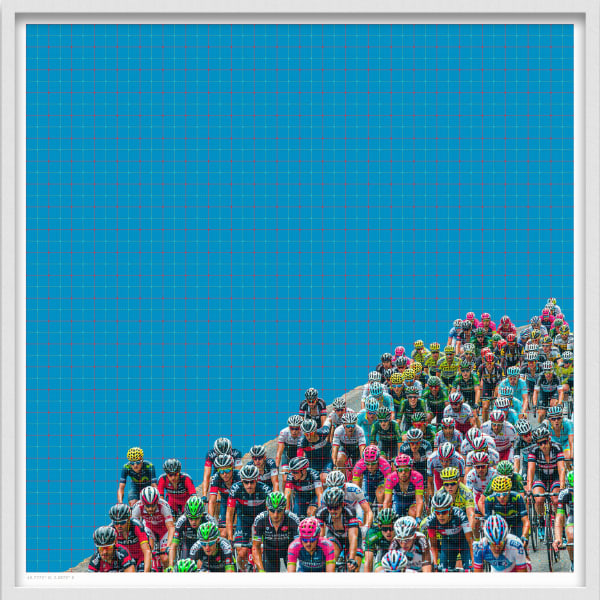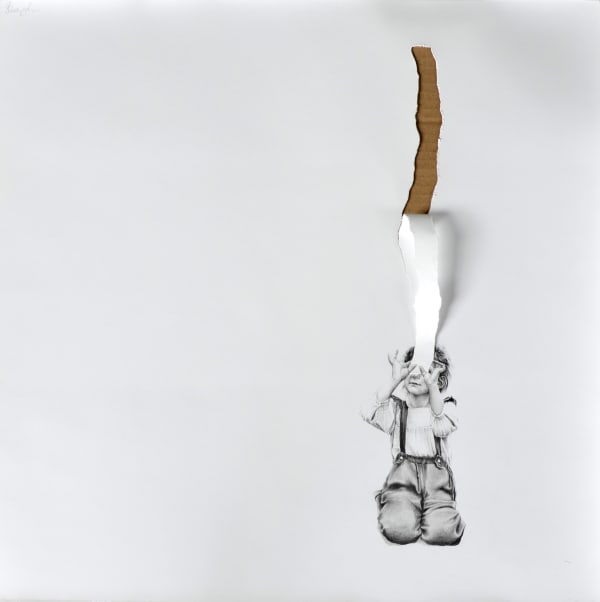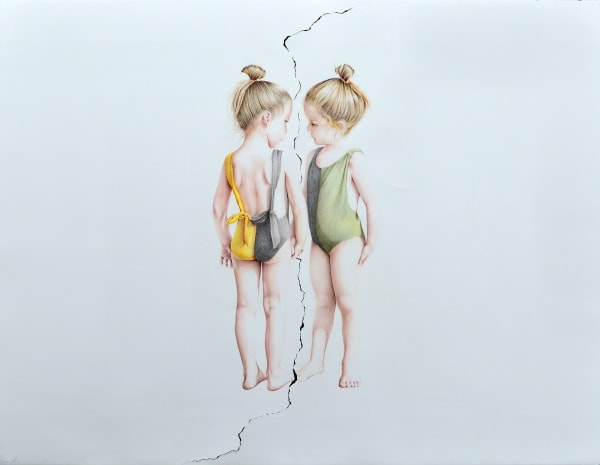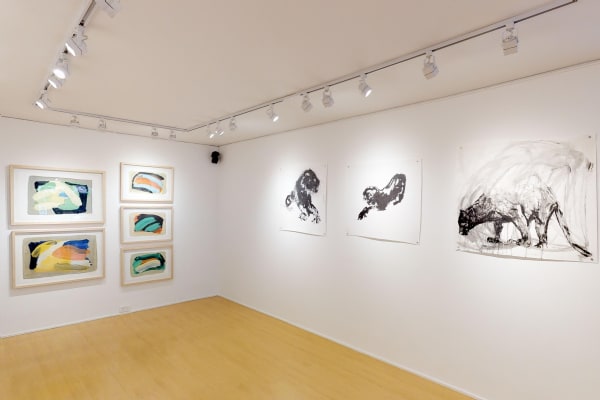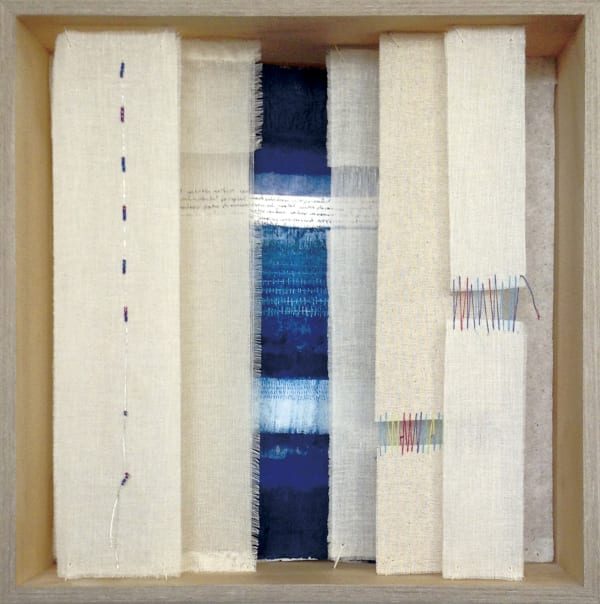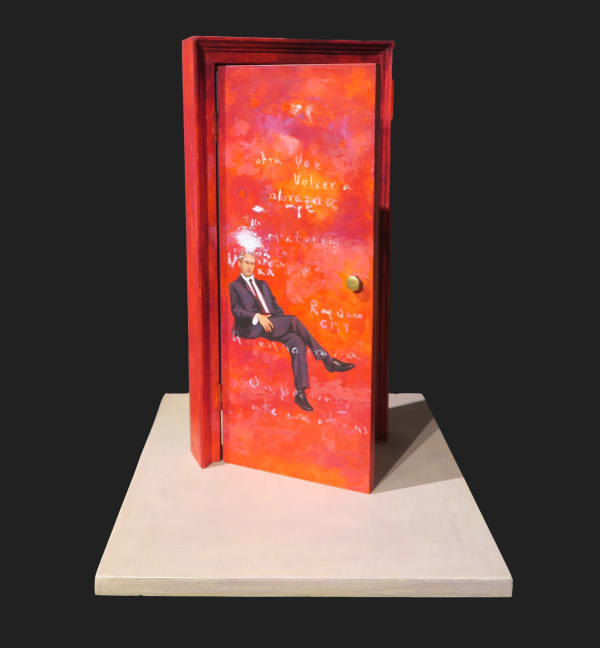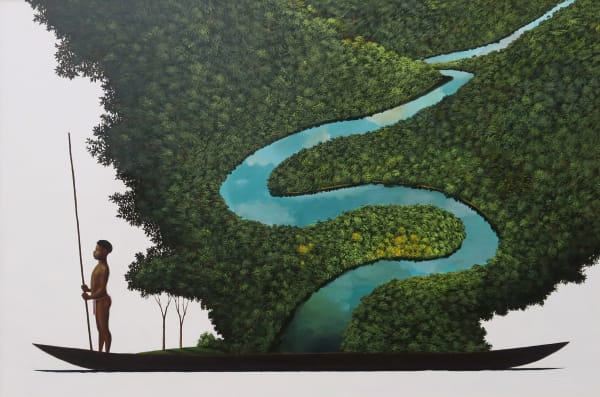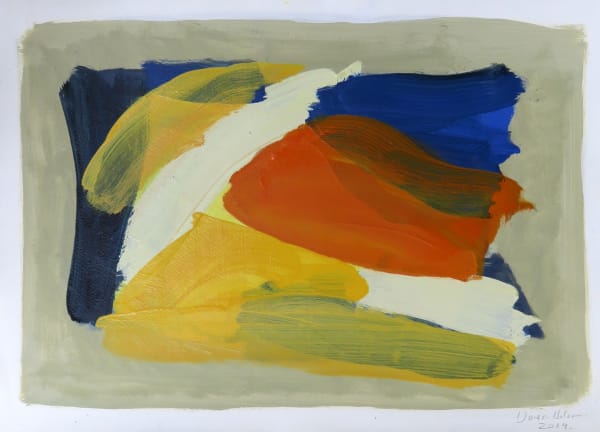In Arrázola's work the depicted children manifest themselves not only as independent and complete beings, but also invoke-through the traces or marks that each character leaves in the environment they inhabit-the ordering interaction of the world and the transformation of space characteristic of human beings at any age.
THE ROLE OF PAPER; THE WORK OF PABLO ARRÁZOLA
By Natalia Vega
Art historian and critic
During the last few decades, the boundaries of what drawing is and can mean have expanded considerably. The young Colombian artist Pablo Arrázola (Bogotá, Colombia, 1991) participates in this development by juxtaposing two modes of language in dialogue: the traditional figurative mode, characteristic of descriptive and realistic representation -limited to the use of the most basic and traditional tools- and the innovative, experimental and abstract mode in which paper is manipulated with a wide number of tools. Arrázola engages with the paper-formally and significantly activating it-by applying various actions of mark-making such as cutting, tearing, scratching, scraping, and rubbing. These actions produce a wide range of elements -such as clean and straight lines, irregular lines, textures, and reliefs-that transform the white paper, which traditionally had been considered solely as support, into a field of action. These interventions result in an array of features that expand the limits of the language and feature characteristics belonging to varied media such as drawing, painting, engraving, and sculptural bas-relief. By manipulating paper as a tactile material and not using it strictly as a surface, he introduces the physical reality of the third dimension and the imaginary reality of an inhabited environmental space.
Drawing has been used by many contemporary artists to explore issues related to various constructions of identity; in this case, the depicted children do not constitute specific or real portraits but, rather, generic representations which help the artist explore the mostly neglected topic of childhood in art, and to address the conceptualization of this stage of life in consonance with current interests within social and cultural studies. In antiquity, the status of childhood was similar to that of women and slaves, discriminated against, and treated as minorities. In subsequent periods children were portrayed in art as miniature adults, going through a preparatory stage that ought to be accelerated. Recently, the intrinsic importance of their experiences, cognitive development, and ability of creative agency have been recognized.
In Arrázola's work the depicted children manifest themselves not only as independent and complete beings, but also invoke-through the traces or marks that each character leaves in the environment they inhabit-the ordering interaction of the world and the transformation of space characteristic of human beings at any age. The paper materializes the metaphor of the blank sheet of paper alluding to the potential of life itself. It also constitutes the field of action of homo ludens, the man who plays, creating an equivalence between art and life where the children represented fulfill an alter ego function in the performing of the artist's actions. The various strategies of drawing Arrázola employs simultaneously lead us to multiple levels of signification alluding to childhood, the practice of art, the perception of the viewer, and additionally manifests that life itself is-like paper-a field for exploratory action and constant re-creation.
December, 2021
-
 Composition 40, 2023View more details
Composition 40, 2023View more details -
 Kiko 32, 2023View more details
Kiko 32, 2023View more details -
 Kiko Series 1, 2022View more details
Kiko Series 1, 2022View more details -
 Kiko Series 41, 2024 SoldView more details
Kiko Series 41, 2024 SoldView more details -
 Kiko Series 42, 2024 SoldView more details
Kiko Series 42, 2024 SoldView more details -
 Kiko Series 43, 2024 SoldView more details
Kiko Series 43, 2024 SoldView more details -
 Kiko Series 44, 2024 SoldView more details
Kiko Series 44, 2024 SoldView more details -
 Kiko Series 45, 2024 SoldView more details
Kiko Series 45, 2024 SoldView more details -
 Kiko Series 46, 2024 SoldView more details
Kiko Series 46, 2024 SoldView more details -
 Kiko Series 47, 2024 SoldView more details
Kiko Series 47, 2024 SoldView more details -
 Kiko Series 7, 2022View more details
Kiko Series 7, 2022View more details
Pablo Arrazola studied visual and fine arts at the Universidad Nacional de Colombia in Bogotá. He has been the recipient of several awards and has participated in numerous solo and group exhibitions in Colombia and abroad. He is presently represented by Beatriz Esguerra Art.
-

Here’s What to Know About This Year’s Dallas Art Fair
BEA at the Dallas Art FairAlex Gonzalez, Thrillist, April 5, 2023 -

No se pierda de stand virtual de Beatriz Esguerra en Artbo
Redaccion Cultura, El Nuevo Siglo, October 29, 2020 -

Primera exposición individual de Pablo Arrazola en BEA
Redaccion, Arteinformado, October 13, 2020 -

“Apuchumala”, la esencia de la infancia en los trazos de Pablo Arrázola
Redacción Cultura, El Nuevo Siglo, September 25, 2020 -

“Navegando espacios”, la esencia del arte colombiano en Artbo fin de semana
Redaccion Cultura, El Nuevo Siglo, July 28, 2020 -

“Navegando espacios”, mirada a la figura humana desde el arte
Redacción Cultura, El Nuevo Siglo, July 15, 2020 -

An Ode to Paper’s Many Possibilities at Beatriz Esguerra Art in Bogotá, Colombia
The editors of ARTnews, ARTnews, July 30, 2019 -

La Nueva Era Invisible
Ana Maria Escallon, Las 2 Orillas, April 22, 2017
-
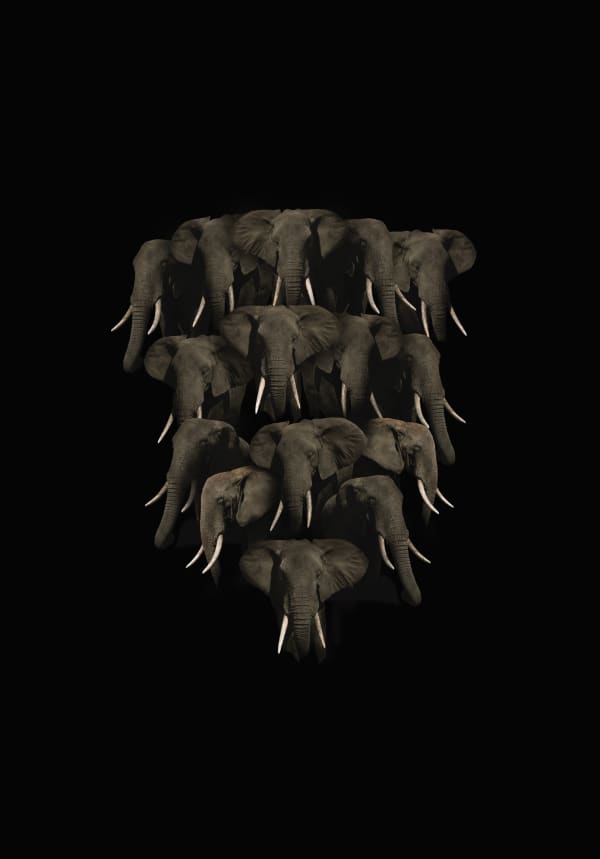
Dallas Art Fair 2024
4 - 8 Apr 2024INTROSPECTIVE LANDSCAPES Colombian artists redefine landscape at the Dallas Art Fair 2024 Discover a world where art transforms the ordinary into the extraordinary. Join us...Read more -

Art Palm Beach 2024
25 - 28 Jan 2024INTROSPECTIVE LANDSCAPES BEA's Colombian Artists Redefine Landscape at Art Palm Beach 2024 Embark on a journey where art transcends the ordinary as Beatriz Esguerra Art...Read more -
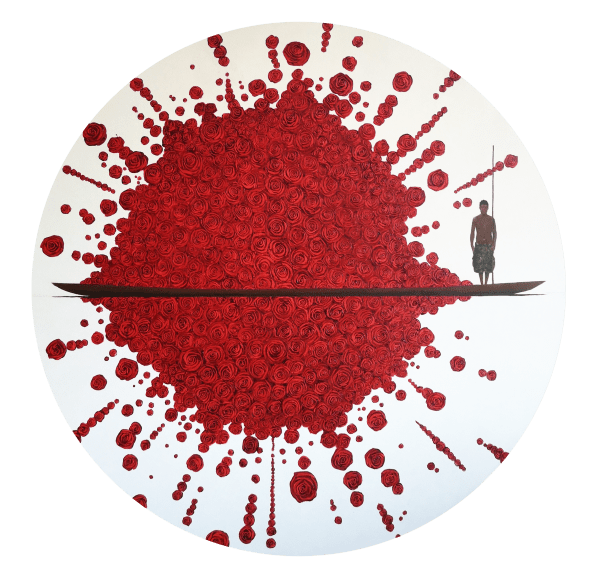
ARTBO 2023
22 - 26 Nov 2023INTROSPECTIVE LANDSCAPES Beatriz Esguerra Art is delighted to present the works of five Colombian artists at ARTBO 2023. These artists, using a figurative visual language,...Read more -
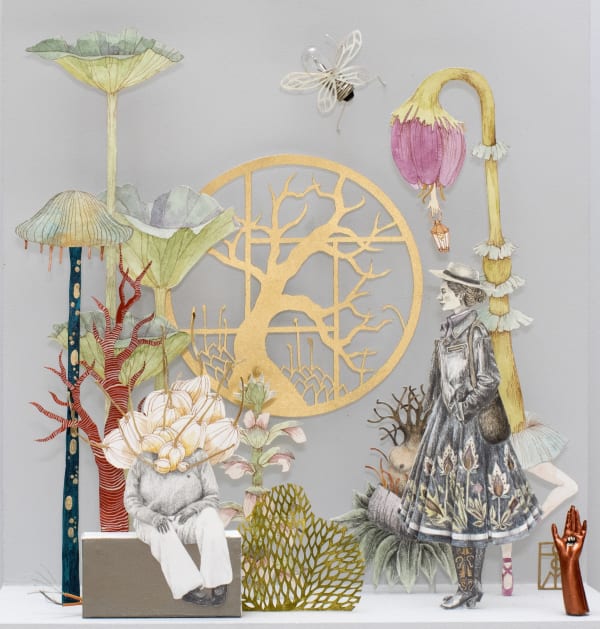
Dallas Art Fair 2023
20 - 23 Apr 2023BEYOND PAPER Colombian artists redefining paper. For decades Colombian artists have been redefining what art on paper is and can be. Next to traditional drawing...Read more -
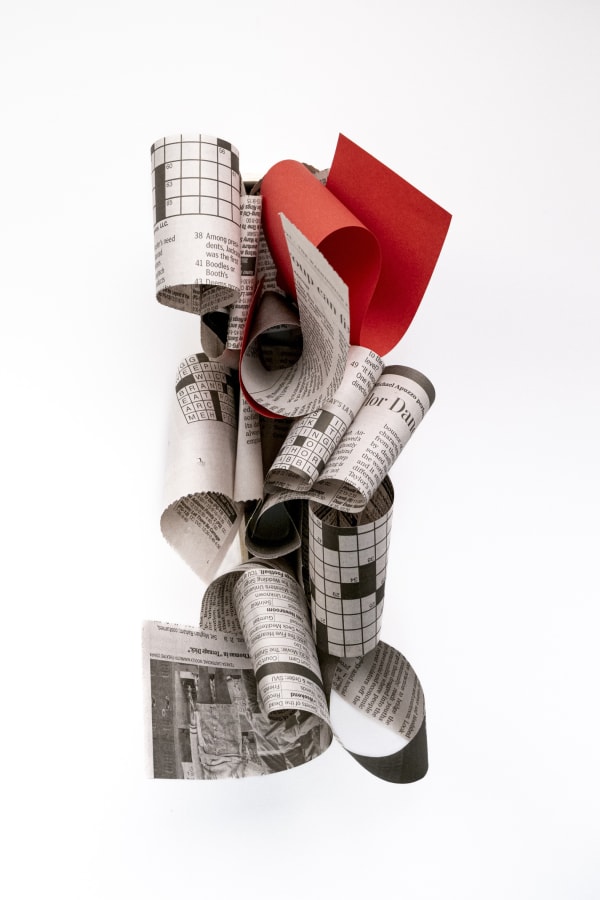
Los Angeles Art Fair 2023
15 - 19 Feb 2023BEYOND PAPER Colombian artists redefining paper. For decades Colombian artists have been redefining what art on paper is and can be. Next to traditional drawing...Read more -
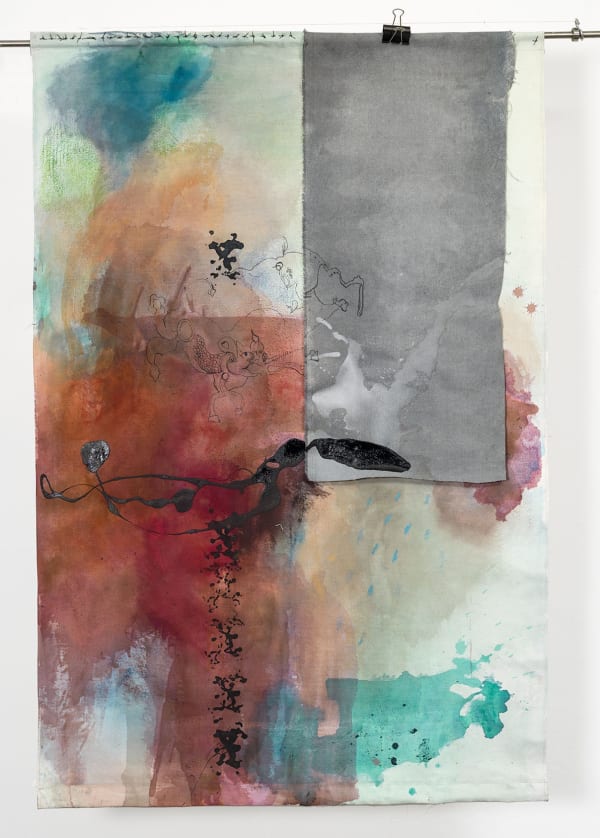
ARTBO 2022
26 - 30 Oct 2022CONVERSATIONS BETWEEN ABSTRACTION AND FIGURATION Beatriz Esguerra Art presents at ARTBO 2022 a conversation between organic abstraction and figuration. Figurative, poetic, and narrative artists Pedro...Read more -
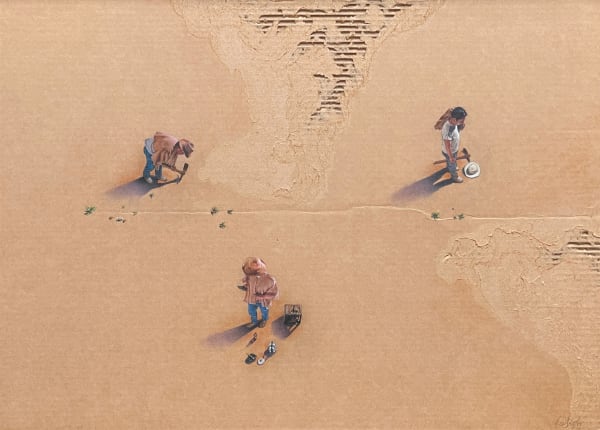
Art on Paper NY 2022
8 - 11 Sep 2022BEYOND PAPER Three Colombian artists redefining drawing Beatriz Esguerra Art at Art on Paper NY For decades Colombian artists have been redefining what drawing is...Read more -

Dallas Art Fair 2022
21 - 24 Apr 2022“Colombian art is one of the world’s best kept secrets.” Colombian art is one of the world’s best kept secrets. Artists with outstanding talent, skill...Read more -

Los Angeles Art Fair 2022
19 - 23 Jan 2022COLOMBIAN PERSPECTIVES Colombian artists redefining paper. Colombian art is one of the world's best kept secrets. Artists with outstanding talent, skill and endless stories...Read more -
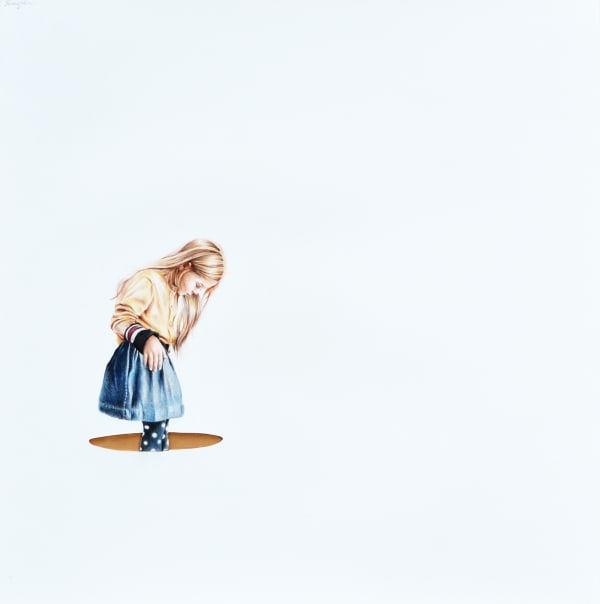
Dallas Art Fair 2021
11 - 14 Nov 2021FIGURE AND SPACE The allure of silent spaces, and figures that interact within them. “Figure and Space” brings together the work of seven Colombian artists...Read more -

Artbo 2021
Conversations 29 Sep - 3 Oct 2021Take a virtual 3D tour of the exhibition CONVERSATIONS During ARTBO 2021, Beatriz Esguerra Art will present the group show 'Conversations,' an exhibition that...Read more -

Art on Paper 2021
"Figure and Space" 9 - 12 Sep 2021The allure of silent spaces, and figures that interact within them. Figure and Space brings together the work of six Colombian artists whose...Read more -
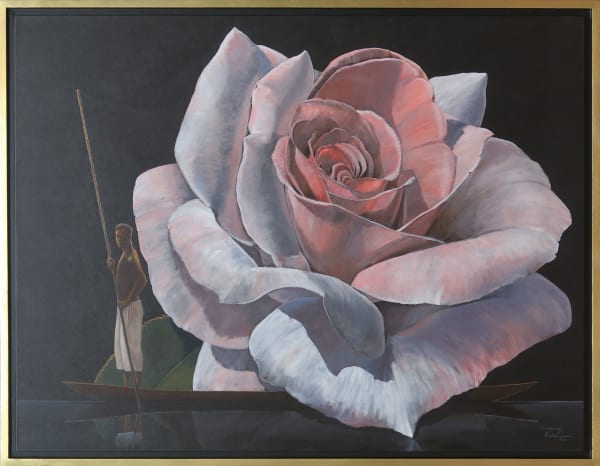
Artbo 2020
27 Oct - 1 Nov 2020ATMOSPHERE AND SPACE Beatriz Esguerra Art presents a selection of works titled 'Atmosphere and Space,' that encompass the gallery's particular style. Atmosphere, space, the human...Read more -

Dallas Art Fair 2020
14 - 23 Apr 2020A fascinating journey through the different expressions of some of Colombia’s best artists. A promoter of Colombia's outstanding artists, Beatriz Esguerra Art offers a journey...Read more -

Artbo 2019
19 - 22 Sep 2019DRAWING & PAINTING Featuring works by Pablo Arrázola, Armando Castro, Teresa Currea, Ismael Rivera, Juan Carlos Rivero-Cintra, and Pedro Ruiz. TAKE A VIRTUAL 3D TOUR...Read more
-

KIKO
Recent Works by Pablo Arrázola 6 - 26 May 2023Kiko, Where are you? Where did you go? The mind is remarkable. Have you ever wondered why we associate black and white with the past? What is it about these...Read more -

ARTBO Fin de Semana
Gallery Group Show 21 - 24 Apr 2022Read more -

Conversations in Small Format
A Small Format Gallery Group Show 9 - 22 Dec 2021CONVERSATIONS A Small Format Gallery Group Show After a year of hardwork and adjustment, we are happy to share that 2021 ends on a high note. To celebrate the end...Read more -

Four x Five
Organized by Dallas Art Fair Projects 11 - 25 Nov 2020The human figure is one of those timeless topics that have been consistently explored throughout art history. 'Navigating Space' is a group show that compiles the work of four different...Read more -
Apuchumala
Recent Works by Pablo Arrazola 16 Oct - 13 Nov 2020In being unable to find a word or concept to define this feeling, I recurred, childishly, to making something up. Beatriz Esguerra Art is pleased to announce rising Colombian artist,...Read more -
Navigating Space
Works by Pablo Arrazola, Mario Arroyave, Carlos Alarcon and Armando Castro. 8 Jul - 9 Aug 2020The human figure is one of those timeless topics that have been consistently explored throughout art history. 'Navigating Space' is a group show that compiles the work of four different...Read more -

insignia
Works by Pedro Ruiz, Mario Arroyave, Armando Castro, Teresa Currea, Carolina Convers, Juan Carlos Rivero-Cintra and Pablo Arrazola. 6 - 29 May 2020Insignia is a group show with works that encompass Beatriz Esguerra Art's particular style. One of the characteristics that stands out is an atmospheric feel. All the works featured in...Read more -

New Arrivals
Works by Luis Alejandro Saiz, Carolina Convers, Pablo Arrazola, Mario Arroyave, Teresa Currea, Pedro Ruiz, Danilo Rojas and Ismael Rivera 8 - 28 Feb 2020This new year brings a refreshing wave of artists and works to our gallery. Beatriz Esguerra Art is pleased to present a group show that will open this Saturday, 8th...Read more -

About Paper
A Gallery Group Show 27 Jul - 22 Aug 2019Paper is a multifaceted element, rich in possibilities. This exhibition seeks to explore the role paper plays in works of art, as well as the wide variety that exists within...Read more -

Assorted
A Gallery Group Show 21 Jan - 8 Mar 2019Read more














